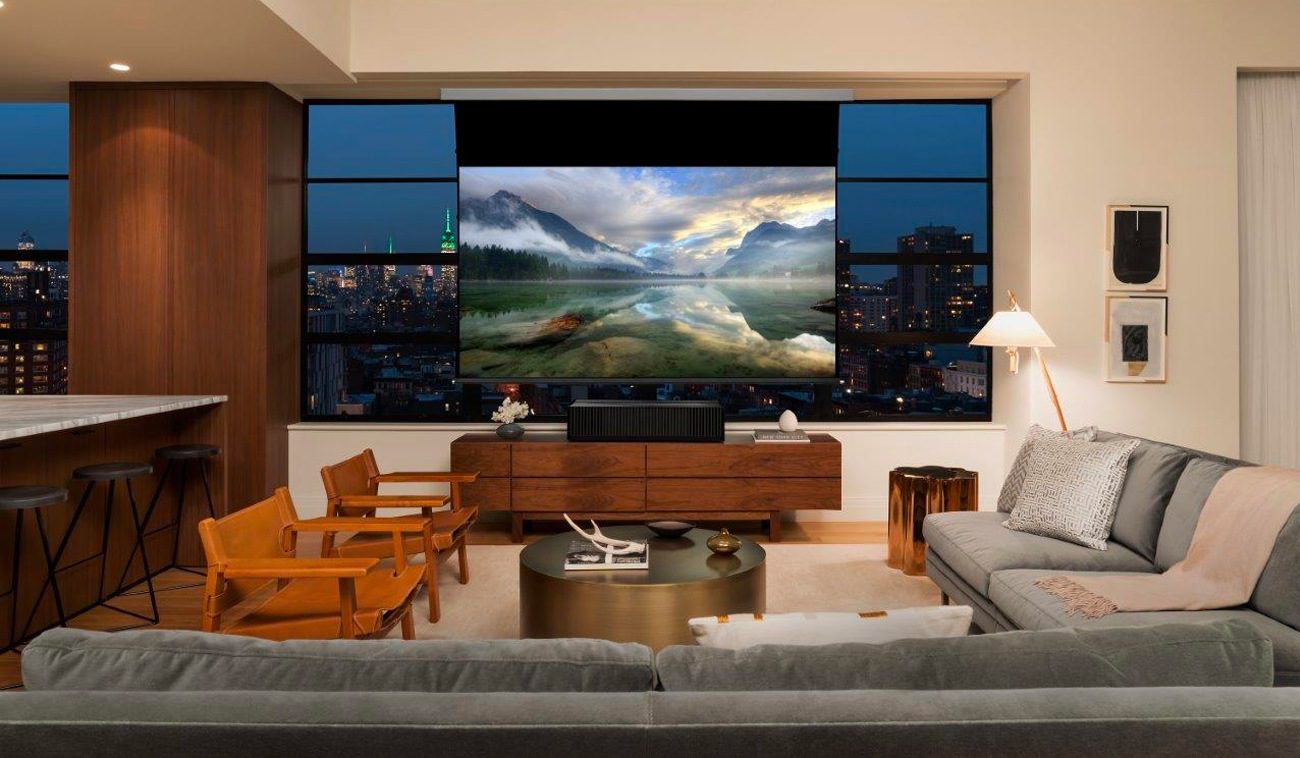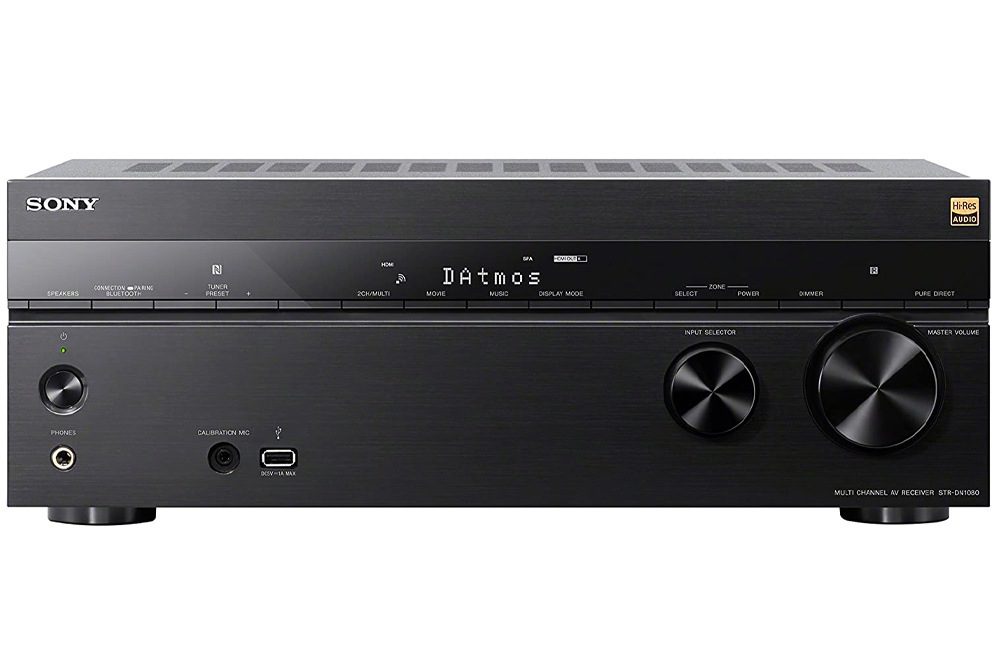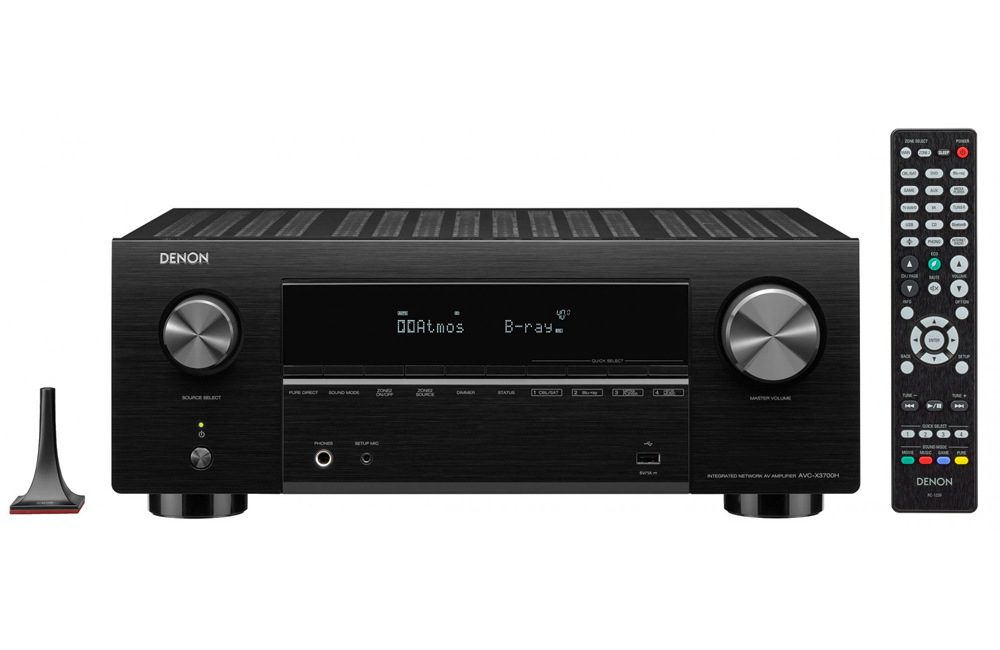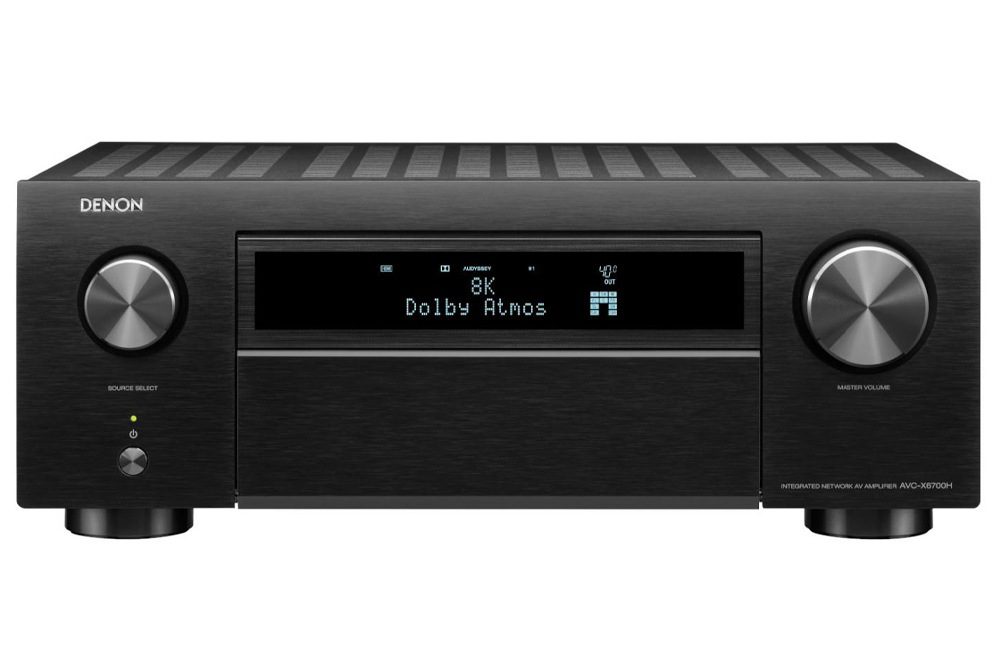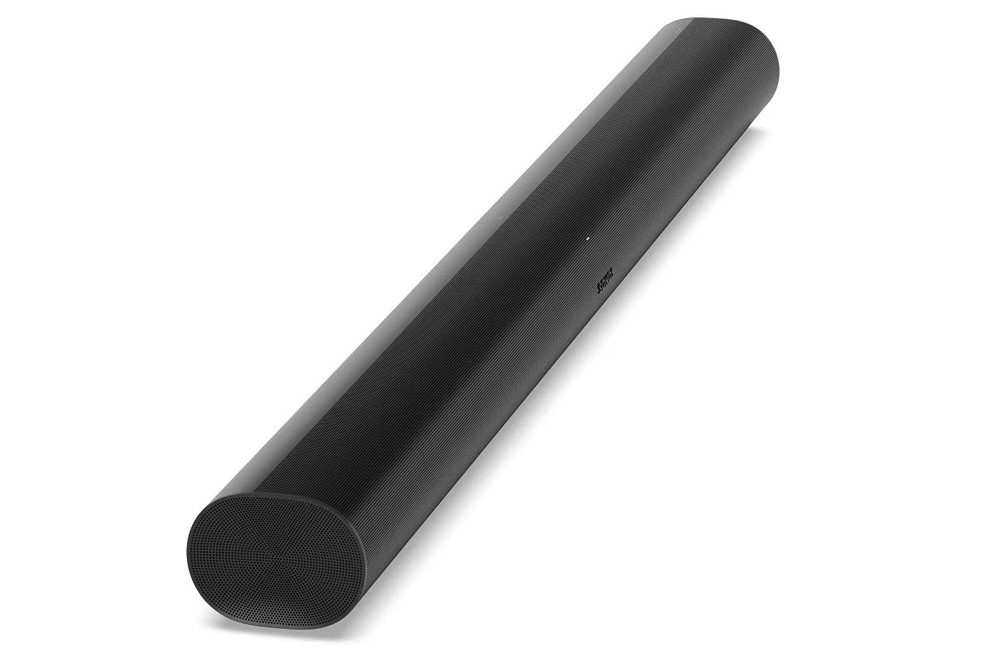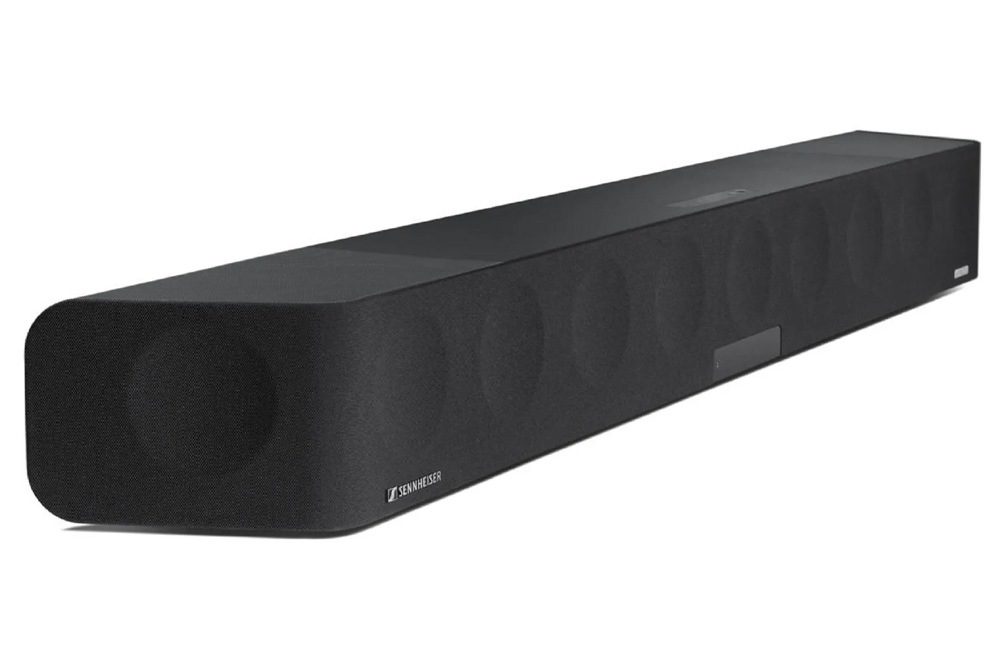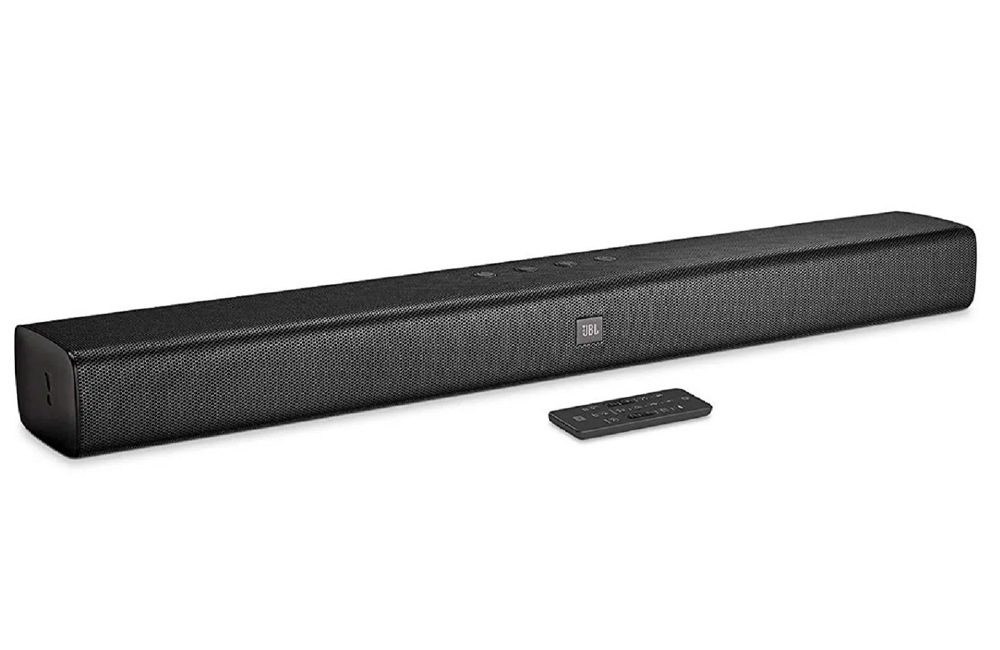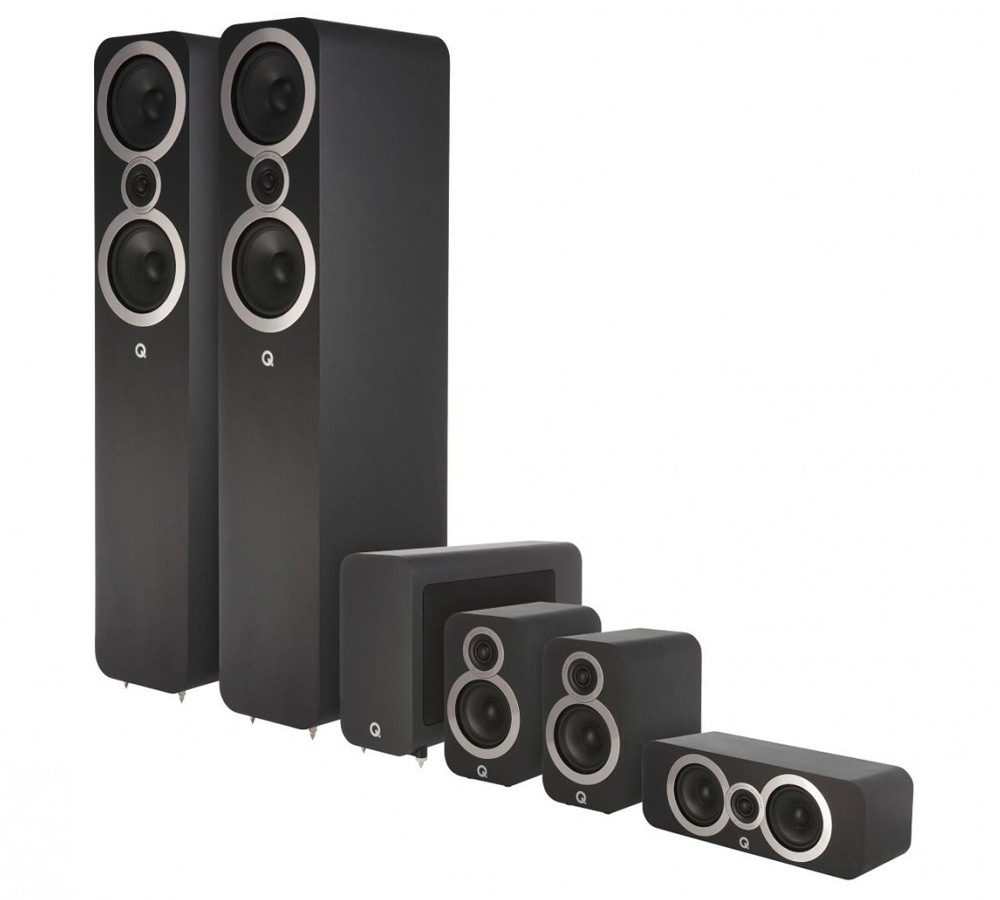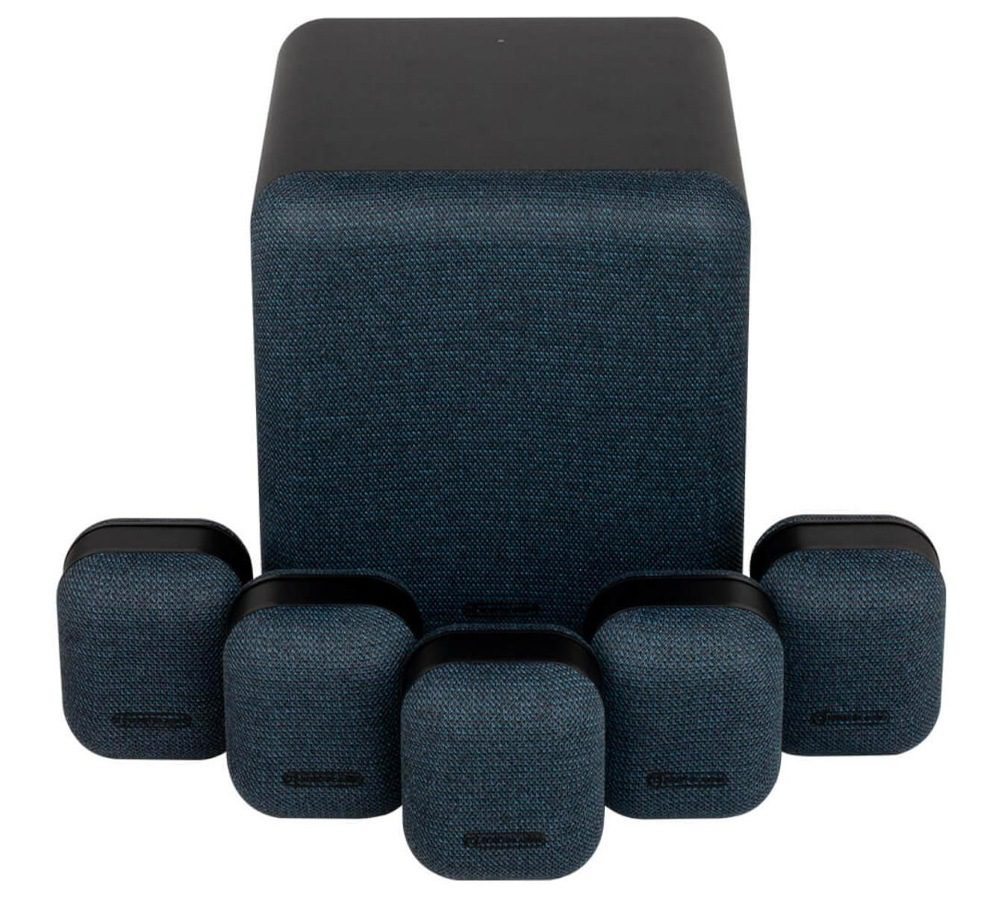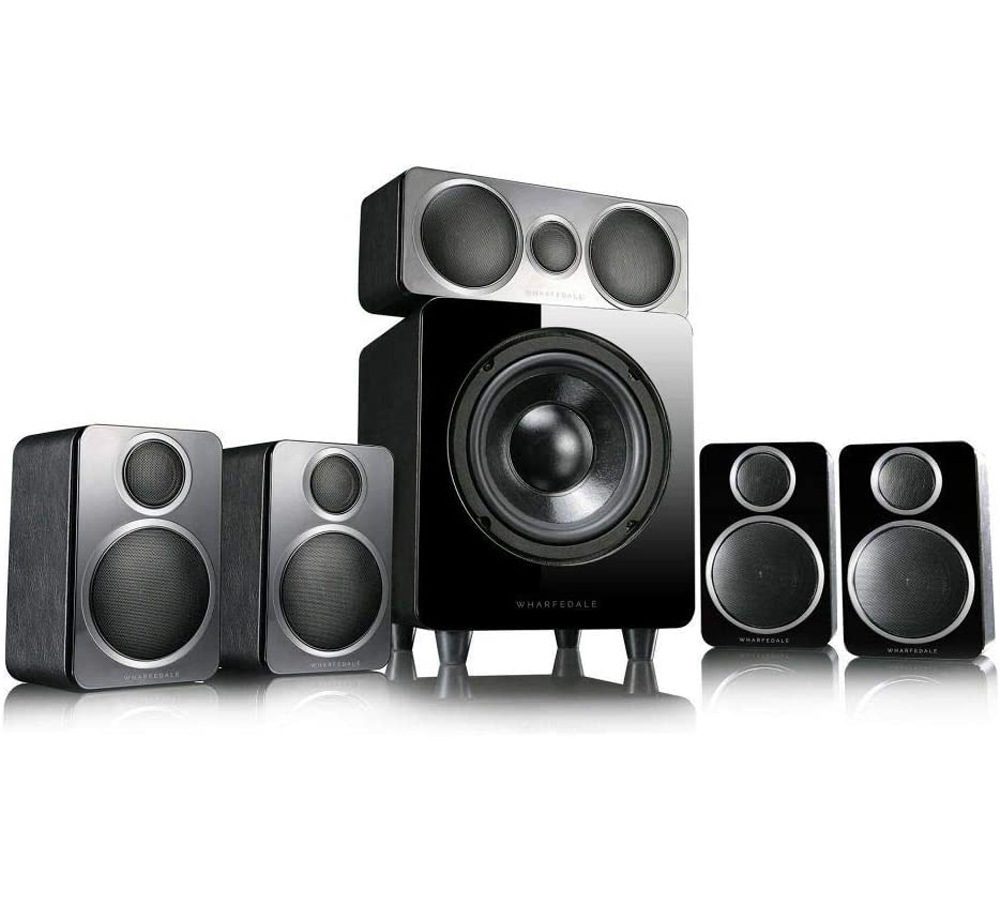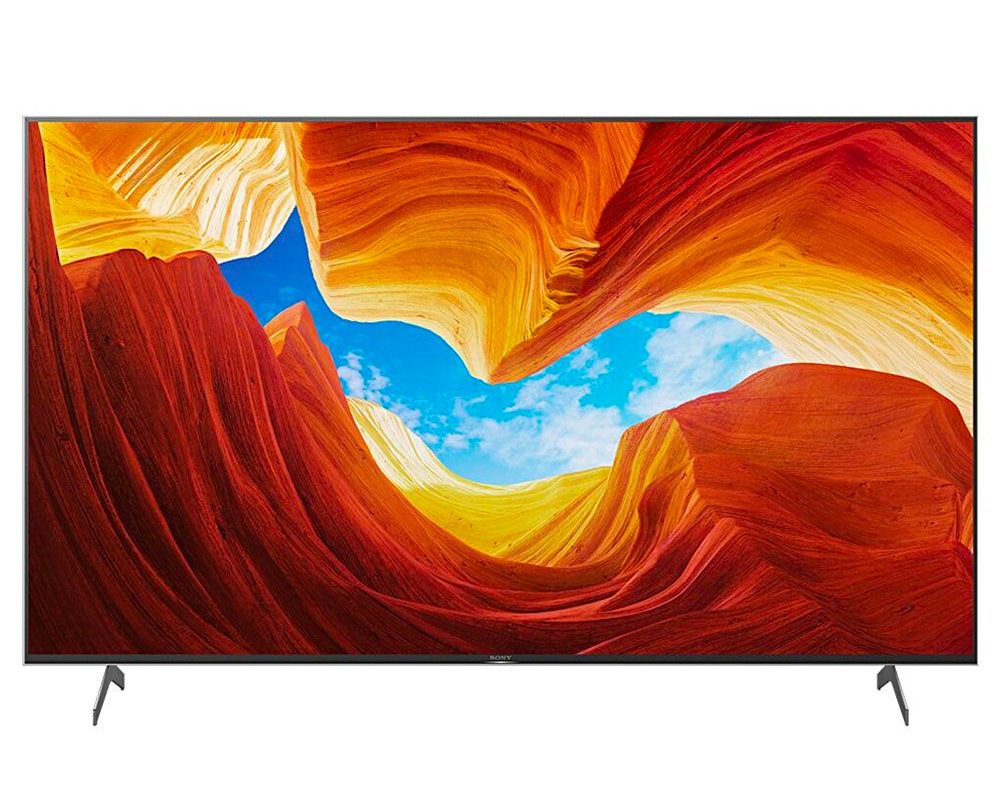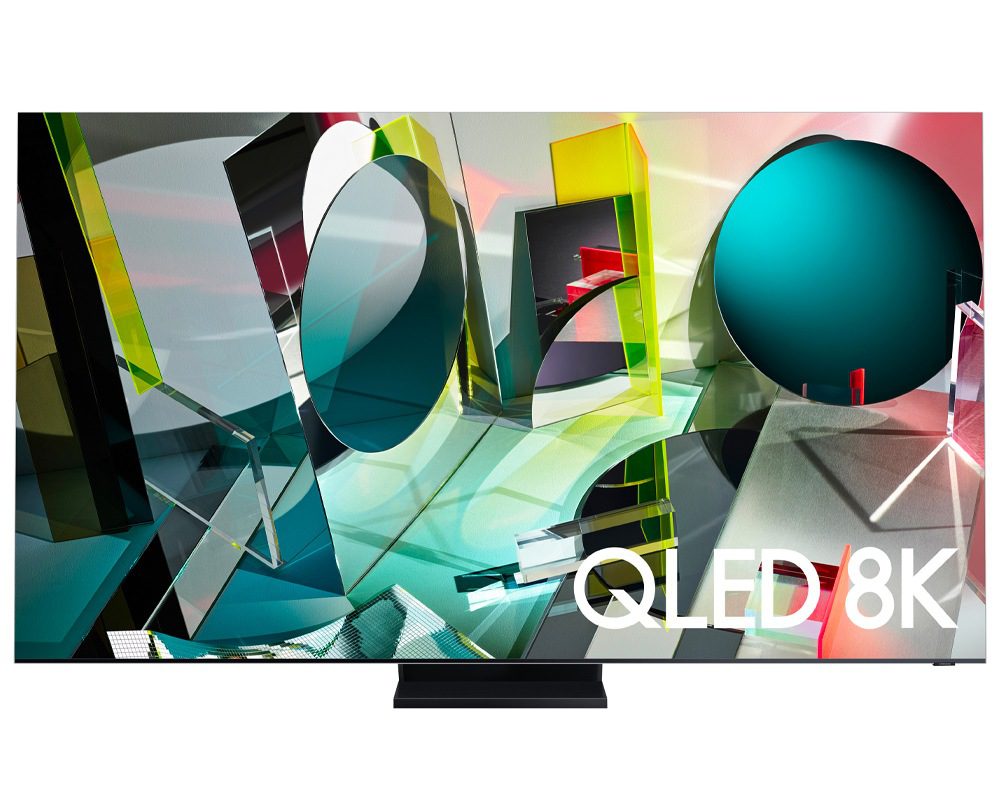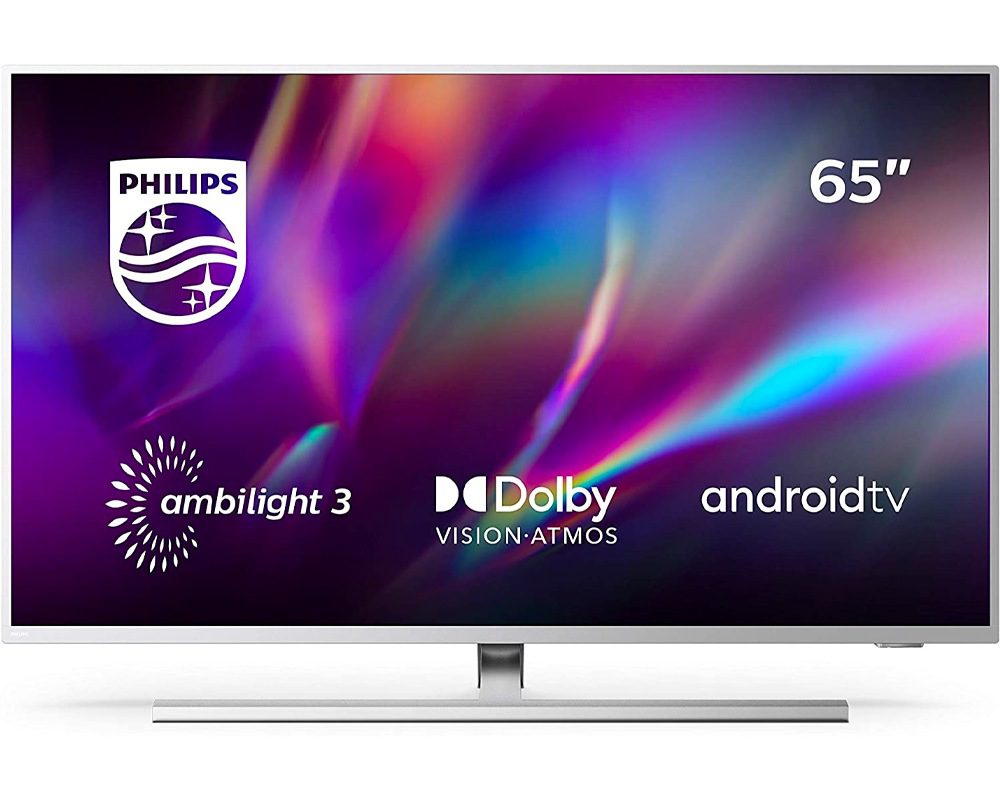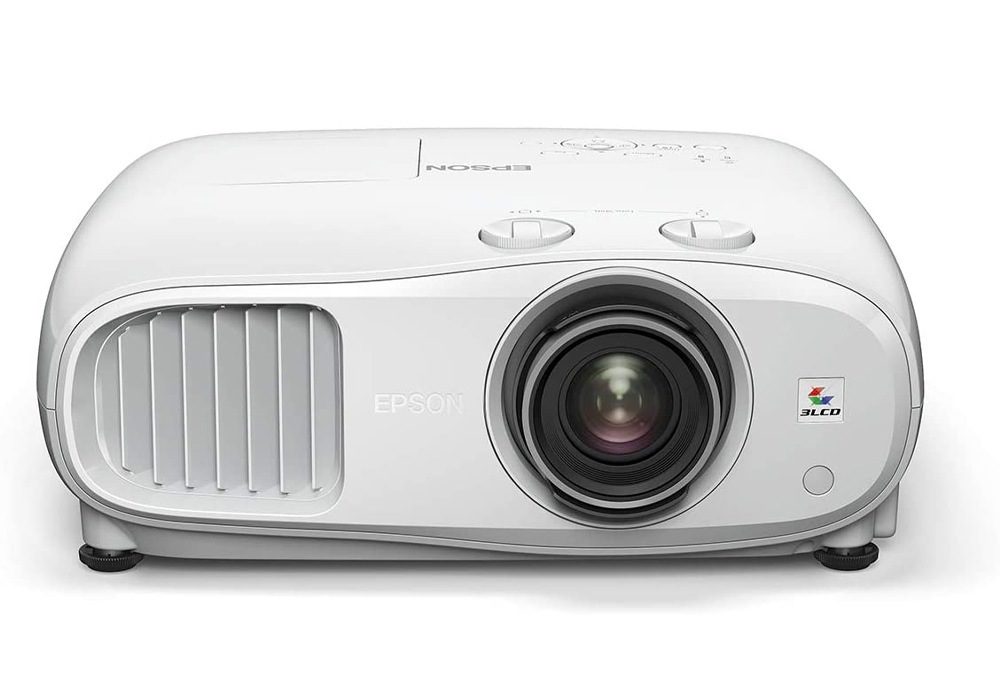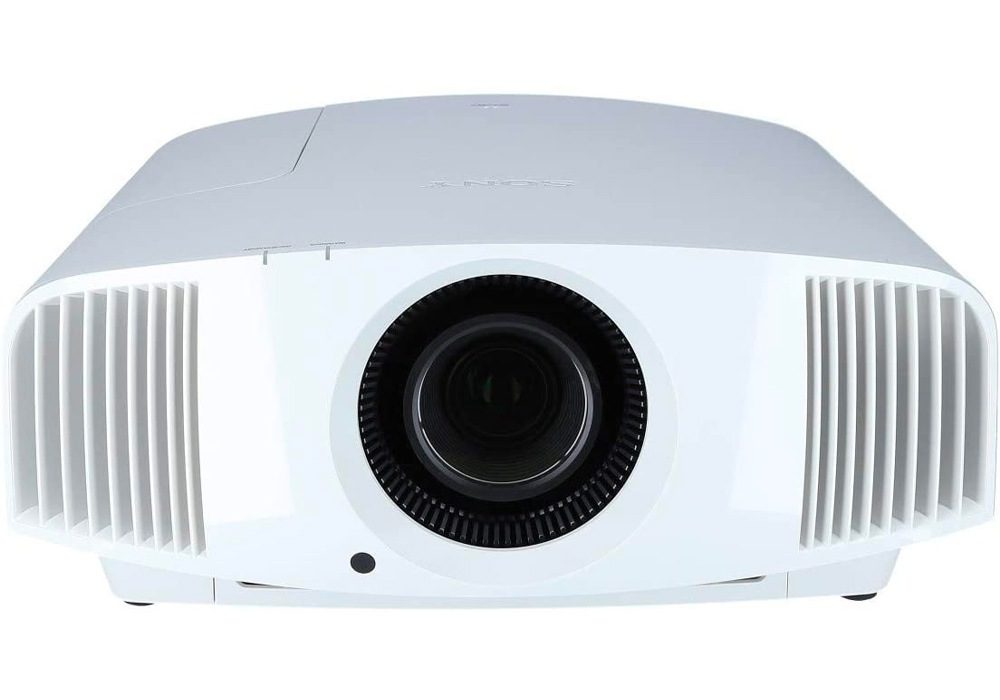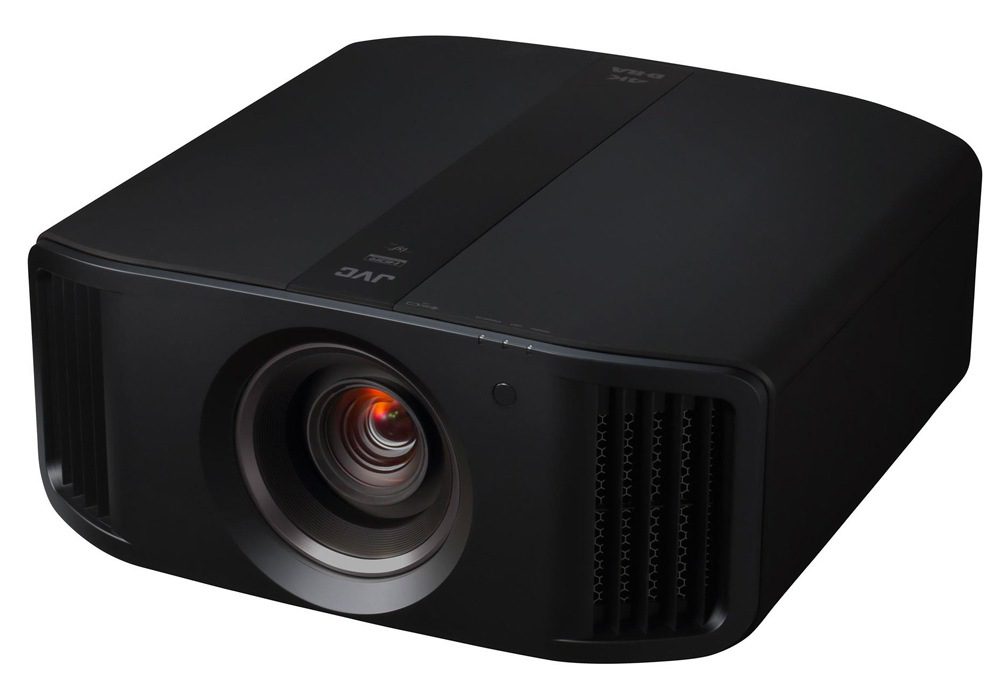Big Screen Experience: How To Create The Perfect Home Cinema
We’re living in a golden era of entertainment. Whether you prefer Disney+, Prime Video, Netflix or BBC iPlayer, there’s never been as much choice or quality when it comes to TV shows. And despite the pandemic playing havoc with the cinema industry, film releases are still pretty good too.
With lockdowns persisting and all that ‘going out’ money sat around going to waste, there’s no better time to set up a home cinema, be it a dedicated room or just an entertainment-minded upgrade to your living room.
The Surround Sound
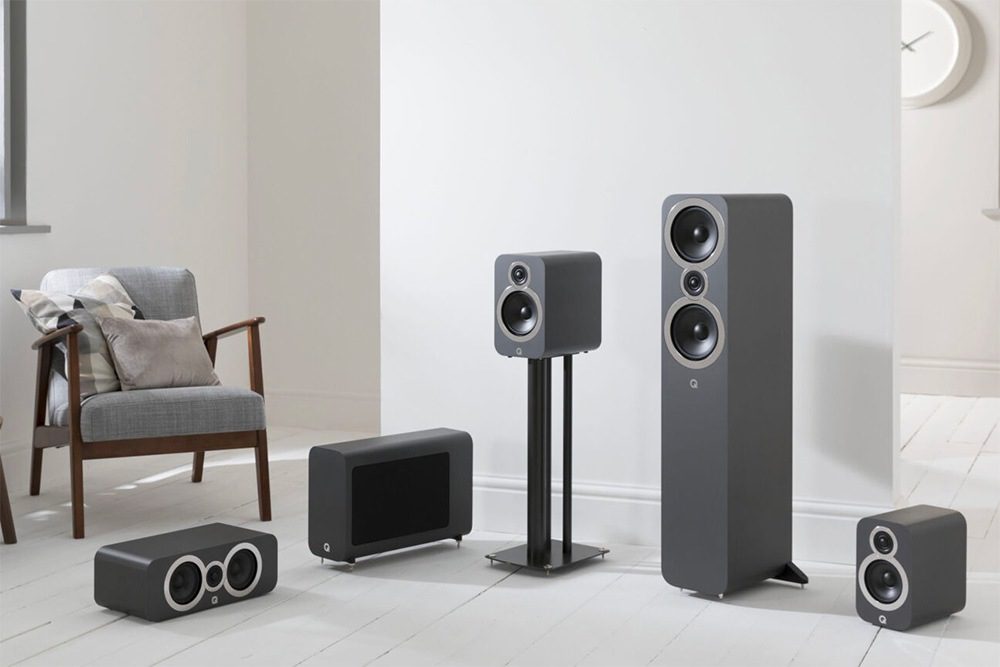
The difference between simply having a good TV and a home cinema begins with the audio. Surround sound sets the foundation for any truly good home cinema and surround sound 5.1 (to give it its proper name), means five full bandwidth channels and one low-frequency effects channel designed for a subwoofer.
It’s best to think of this layout as a square, with you (the viewer), sitting in the middle: a speaker sits in each corner (two behind, two in front) with a further speaker placed centrally between the front two corners.
Different speakers in this formation provide different parts of the audio. In the majority of setups, the centre speaker facing you is for dialogue while the front left and right speakers provide stereo sound for music and effects. The rear two speakers of the formation provide the ‘surround sound’. Going to the next level, 7.1 surround sound systems incorporate, perhaps unsurprisingly, an extra two speakers which move the sound around the room.
Atmos, meanwhile, which larger cinemas enjoy telling you about before each film, adds a height element to the sound. This makes it feel as if the audio is above you by bouncing audio off the ceiling for a truly immersive experience.
But no matter what type of surround sound you opt for, you’re going to need either a soundbar or AV receiver.
Option 1: AV Receiver
If you want to do things properly, there’s really no substitute for an AV receiver and the aforementioned speaker setup.
The AV receiver acts as the nerve centre of your home theatre system. It performs a host of essential functions, including decoding surround sound formats, acting as a multi-channel amplifier to drive sound to your speakers and switching between audio and video components.
Invest in a high-quality AV receiver and you really are moving into waking up the neighbours territory. For those on a budget, the Sony STR-DN1080 is a great value workhorse but if you’re splashing out, Denon’s AVC-X3700H is frankly remarkable for clear, detailed sound and connectivity.
Option 2: Soundbar
If you’ve just laid out an extortionate amount for a top of the range TV and there’s not much left for the audio, or you just don’t have the space or inclination to introduce five speakers and a sub to your living area, a soundbar is an excellent option. They’re easy to set up, don’t take up much room, and newer versions offer legitimate surround sound thanks to integrated Dolby Atmos technology. Although they can’t compare to a true surround sound setup powered by an AV receiver, they do offer a substantial upgrade on your integrated TV speakers.
From our experience the Sonos Arc is a standout, adding another excellent option to their impressive range of home speakers. For those on a budget, the JBL Bar Studio offers great-value audio for less than £100. For something substantial however, both in space requirements and sound output, the Sennheiser Ambeo Soundbar is a frankly remarkable piece of kit with that all important Dolby Atmos and then some.
The Speakers
We’re moving into deeper waters now, well beyond the plug-and-play shallow end. You know what surround sound is, you know about the soundbar crossroads – now it’s time to delve into the actual speakers. Of course, you could opt for seven speakers (or more) but realistically, unless this is all going into a dedicated room with genuine space, it’s going to get cluttered pretty quickly. Five is more than adequate for most enthusiasts.
There’s a lot of choice out there. If you require something affordable, consider the Wharfedale DX-2. They’re compact so you can stash them easily around the room without taking up loads of space and they sound clear and detailed.
When it comes to the big guns, you’re spoilt for choice. Monitor Audio, Dali and Q Acoustics regularly top home cinema nerd lists. The latter’s 3050i 5.1 Cinema Pack, in particular, is insanely good.
The Visuals
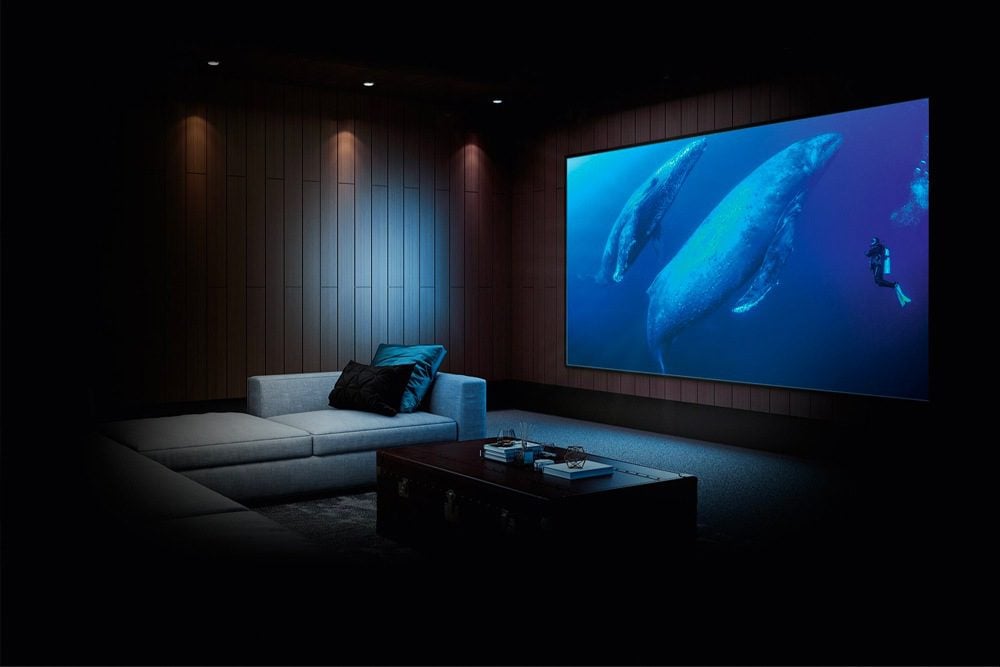
In home cinema land you don’t sacrifice the visuals. There’s a balance here that must be met for a truly immersive experience which means every inch counts. Everything north of 55 that is. You probably already have a TV that meets this requirement but if you don’t, we’ve got you.
TVs
Those on a budget: Sony’s KD-65XH9005 is the cheapest 65″ 4K UHD LED TV you’ll find that offers genuine value for money. The incredible app selection and impressive picture quality makes up for the lacking sound credentials, which your new setup will cancel out.
If money and space is no object, just pick up an 85″ Samsung 8k TV and be done with it for the next decade.
Projectors
For the purists however, it’s all about the projector. They’ve come a long way from the days of hanging off your school classroom ceiling and setting off the smoke alarms as they overheat. If you’re going down this route, either get yourself a pull-down projector screen or paint a wall white and experience the real deal.
Budget buyers can make the most of Epson’s EH-TW7000, which provides an entry-level 4K and HD option for a great value price. It’ll do 3D too.
If you’re serious about achieving a cinematic experience, Sony’s VPL-VW270ES delivers the sort of quality you could charge on the door for. Native 4K, connectivity galore and a noticeable upgrade to lower tier rivals. The perfect addition to complete you package. Happy viewing.
